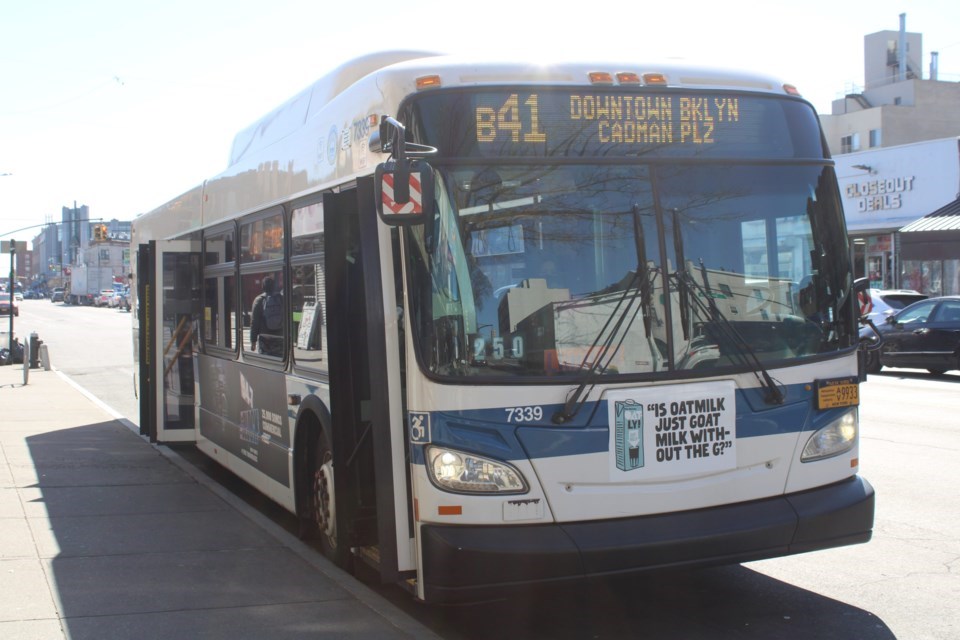Two years after committing to build 150 miles of bus lanes by 2026, Mayor Eric Adams has fallen short of his promise, failing to meet both his 2022 and 2023 goals and constructing only 26 miles of bus lanes.
Without these changes, riders who take the bus on some of the city’s most crucial routes continue to face slow bus speeds and unreliable service. Traffic congestion and an increasing number of cyclists also contribute to delays.
On Flatbush Avenue’s B41, which runs through middle of the borough from downtown Brooklyn to Marine Park, riders say they have experienced a difficult commute for decades.
According to MTA Data, in December 2023, the average speed of the B41 was 7.23 miles per hour during peak time, below the city's average of 8.1 miles an hour.
To avoid the slower service, some riders are forced to take unauthorized shared vans called “dollar vans” or Ubers to reach their destinations, adding to travel costs and lengthening commutes.
“The 41 isn’t running frequently in the morning, so most times I have to take a dollar van to get me to the train station,” says Reva Thomas, a Public Health Advisor who lives in Flatbush and commutes to downtown Brooklyn for work during the week. “So, I'm paying double the fare each way going to work and coming from work every night.”
Other issues, like “bus-bunching,” or when multiple buses arrive at a stop at the same time in between long wait times, also frustrate riders.
Last month, the DOT completed a bus lane redesign on Livingston Street from Boerum Place to Flatbush Avenue, where the 41 begins. The redesign creates a mile of bus lanes in the busy transit hub.
“Our redesign of Livingston Street has transformed what was a congested, double-parked corridor into two-way fully protected and dedicated bus lanes to get bus riders where they’re going faster—while also preserving access and enhancing safety for everyone,” said city Department of Transportation Commissioner Ydanis Rodriguez in a press release. “Bus riders deserve fast and reliable service so that they spend less time in transit and more time with their families and friends, or at important appointments.”
But some riders are not convinced that bus lanes are an effective solution. “In my opinion, there's still congestion,” says Magalie Remy, a registered nurse who rides the 41 daily and has observed the Livingston Street redesign. “You're still dealing with the traffic from the cars.
Remy says she often has to wait 20 to 30 minutes for the B41 to arrive, often forcing her to take Utica Avenue’s B46 on her commute home. Instead of bus lanes, Remy says there should be more busses added to the route to increase frequency.
Riders Alliance, an organization that advocates for more investment into public transportation, recently held several community meetings and canvassing events to assess the needs of bus riders along Flatbush Avenue. The group is in support of bus lanes.
“Better buses really is a social justice issue that intersects with so many things,” said Jolyse Race, a senior organizer with Riders Alliance at a recent community meeting. “If you're an essential worker working in healthcare and you're late to work, it's not only impacting you but it's also impacting your patients as well.”
“People that have been historically marginalized by policy and the way infrastructure is built, they are also being impacted by bad public transit as well,” Race said.


.png;w=120;h=80;mode=crop)

